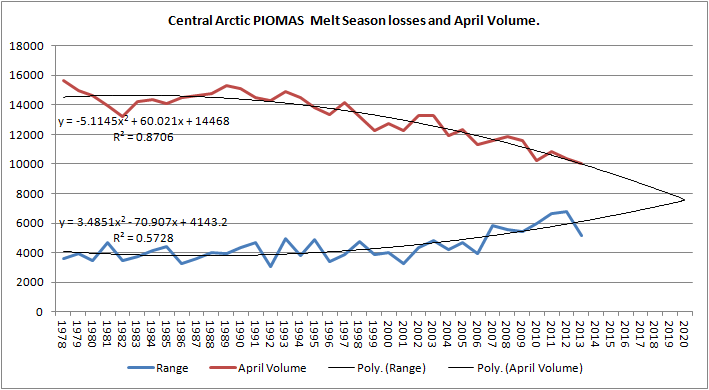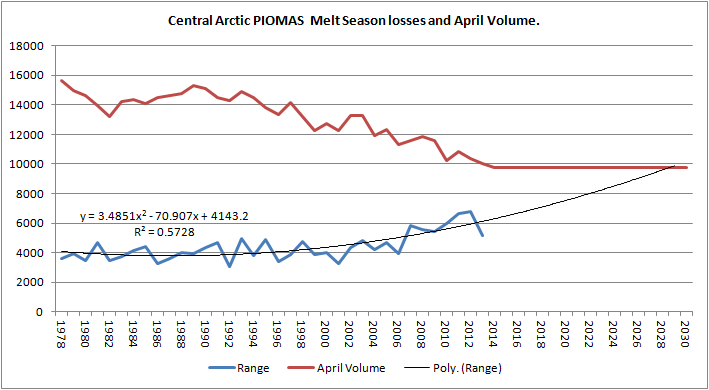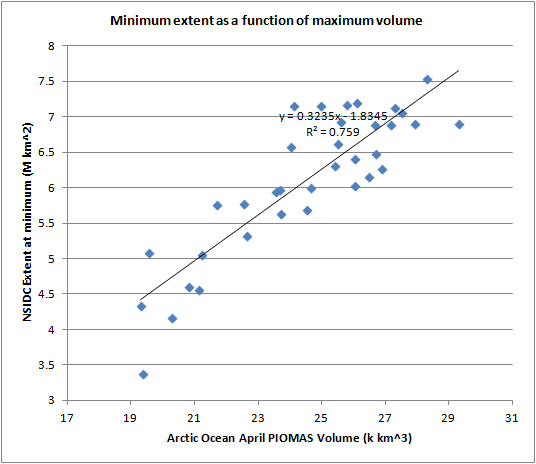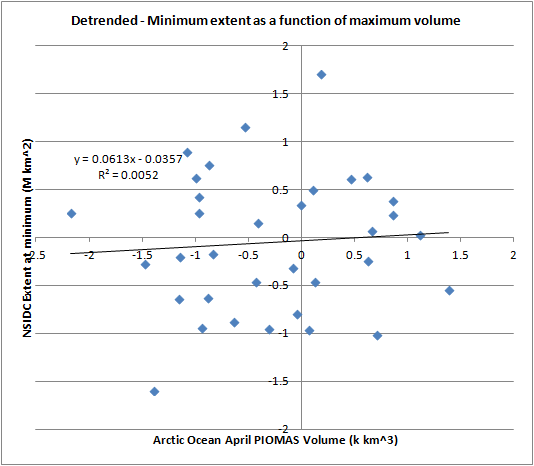OMrSweetMath,
Thanks. I'm also no expert on timeseries analysis (I hadn't even heard of SARIMA). But I wonder if the increase in statistical confidence gained by using all months for all years as anomalies is sound. You find that the spline forecast on just September data is lower than that using all months, this is to be expected because September volume is declining faster than April (with a range of declines between those months spanning those extremes). So in this case I wonder if the higher confidence gained from using a longer series is illusory and if the result of prediction using all months will consistently overshoot the actual September volume.
I've suggested recently that we might see a reduction of loss rates in April volume because much of the past decline in volume has been from loss of thicker multi-year ice (ice which has survived more than one season). However the pack is reaching a state where it is mainly first year ice (new ice which has grown since the previous September).
Continuing melt season losses and April peak volume for the Arctic Ocean into the future, and the two curves meet in around 2020. When the curves meet it implies that April volume is equal to melt season losses resulting in virtually* no ice by September. *allow 'wiggle room' for weather impacts!

However if the Central Arctic ceases to lose volume in April because it hits a 'floor' of around 2m thick, and the above plot becomes....

The reason I raise this issue is that such a feasible underlying physical process might exacerbate the potential problem I see with using all months in forming the trend.
I've previously compared NSIDC Extent and PIOMAS volume - the extent & volume at the days of volume maximum in April and extent minimum in September. These should be related due to open water formation efficiency - the thinner ice gets the more open water can be exposed by a given melt.

Regressing the two produces quite a strong R2. However using interannual differences to effectively detrend* produces no residual relationship. *(actually the following answers the question - what is the relationship between interannual changes of volume in April and interannual changes of extent in September)

OK, strictly I should use the relationship in the first scatter plot to develop a series of residuals and present those, but I've not updated that, I did do it some years ago. What I've had problems with is 'explaining' the residuals using indices such as temperature of the mid troposphere, Arctic Oscillation, Pacific/North American index etc..
In terms of prediction I think accounting for the residuals in the past series is the key. Whether the factors involved in those residuals can then be explained is another question entirely!
The reason I posted those two scatter plots is that I see initial volume (aka thickness) in April as mainly explaining the trend, and not being a good predictor of variation around the trend.
If you do want to slew the conversation more firmly in the direction of prediction, there's a prediction thread we could move to here.
http://forum.arctic-sea-ice.net/index.php/topic,696.0.htmlAlthough strictly, IMO, prediction of this year is reasonable fallout from the April data, until May data is released.
